How to choose the right vacuum cleaner for your home
A modern vacuum cleaner is not a luxury, but an absolute must! In conditions when the ecological situation is constantly deteriorating, the number of allergic diseases is growing, and dust storms are no longer exotic, the possibility of effective cleaning of living space comes to the fore.
Therefore, the basic rules and criteria for choosing a vacuum cleaner for the home should not be ignored as an obsessive traveling salesman - today the effectiveness of maintaining a healthy microclimate in the house depends on their observance.

- Device and principle of operation
- Choosing a vacuum cleaner: types and features
- Basic rules and criteria for choosing a vacuum cleaner for the home
- How to choose a good vacuum cleaner for your home: what is important?
- Popular models and manufacturers: who to give preference to?
- Video: how to choose the right vacuum cleaner
Device and principle of operation
A typical vacuum cleaner is a household appliance designed to remove dust, small particles and debris from use surfaces such as floors, floor coverings or upholstery. Structurally, it consists of a housing, a receiving chamber where the dust collector is located, an air chamber and a filtration chamber (not always present, especially in budget models). In addition, it can be supplied with a flexible air duct, brushes and extension tubes.

The operation of the vacuum cleaner is based on the principle of moving air masses from a high-pressure zone to a low-pressure zone. The vacuum is created by a centrifugal compressor in the air chamber, which creates a vacuum effect. They also distinguish between such a concept as the strength or power of suction.
Important! The concept of suction power should not be confused with electrical power. These are completely different characteristics!
Choosing a vacuum cleaner: types and features
All existing devices can be divided both by the type of cleaning: dry and wet, and by the garbage collection system used in them: direct (dust is collected in a bag) and container, when garbage accumulates in a special container. In addition, vacuum cleaners differ both in principle and in design. The most common options are:
- Typical outdoor. Most often used.
- Mini vacuum cleaner. Designed for the treatment of small areas with a small area, such as in a car.
- Manual vertical ("mop" type). In terms of functionality, it is almost as good as floor-standing models, but it often loses in power.
- Robot. Fresh brainchild of scientific and technological progress. It is quite functional, but it puts forward requirements for the type of room, since it does not work equally well on different floor coverings (for example, on carpets). More suitable for maintaining cleanliness in the house after a general cleaning.
Note! In fact, there are many more existing differences. These are the types of brushes used, and parking methods, and design features of additional elements.Nevertheless, all of them do not have a significant impact on the direct implementation of the main functions.

Basic rules and criteria for choosing a vacuum cleaner for the home
Since the capabilities of modern vacuum cleaners vary over the widest range, it is necessary to outline the primary tasks that such a device must perform in each specific case. This will help determine the main parameters that are worth paying attention to, since there are also a lot of them.
Power
As already mentioned, when it comes to vacuum cleaners, there are two types of power.
Consumed electrical power
An important parameter that determines how effectively the device will "pick up" dust and debris. It matters when cleaning is done often enough - will affect the size of the electricity bill. For example, mini-vacuum cleaners for the house from the mains powered, are characterized by low power consumption, as well as medium suction power. But the stationary ones will lift the carpet.

Net power or suction power
A conventional vacuum cleaner with a power consumption of 1500W to 2500W provides a suction power of 350-500W. This should be enough to clean your average apartment.
The given characteristic strongly depends on the efficiency of the electric motor, as well as the availability of additional systems such as filters, centrifuges, etc. This explains why the suction power can be the same for different devices at different power levels.

Dust collector type
There are models on the market today with three different types of dust collectors. Since choosing a good vacuum cleaner for your home means ensuring the maximum level of cleaning, it is worth mentioning them separately. They differ in the amount of internal volume (from 0.5 to 12 liters, depending on the model).
Cyclonic type
It differs in that dust, wool, hair and small particles are collected on the walls of the receiving container under the action of the formed air vortex. Requires washing periodically. Structurally, it is a transparent container made of plastic with a special central part, which helps to form vortices of the incoming flow. When emptying, it is not excluded that dust gets back into the room.

With a bag
The oldest, but still the most common type. It can be both disposable and reusable. Disposable bags are made of paper and discarded after use. Reusable - less hygienic.
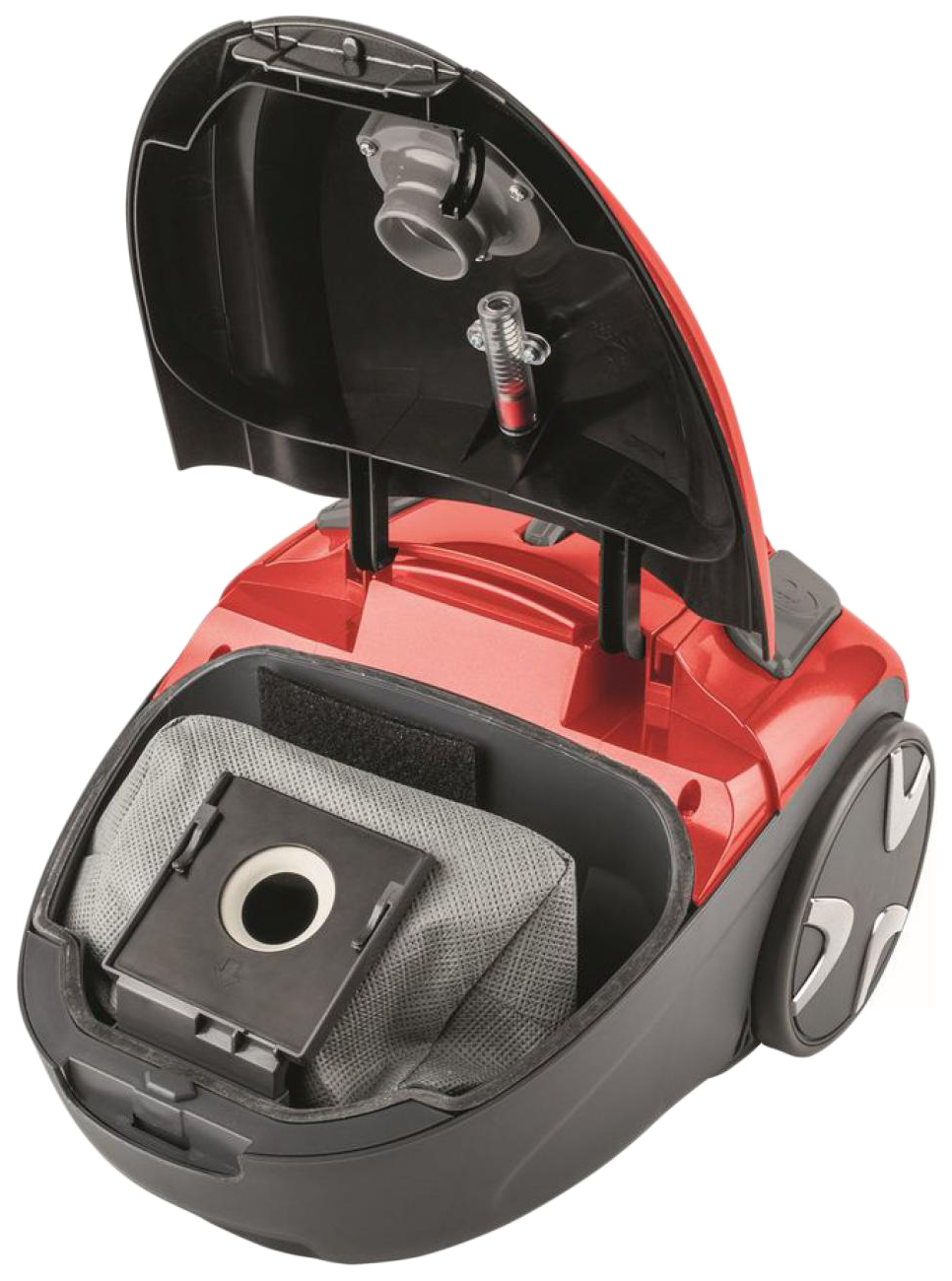
Filtration system
Significant differences are present in the very approach to providing filtration, which can affect the final choice of a vacuum cleaner:
- Mechanical cleaning filter system. Conventional foam or paper filters. Weakest efficiency.
- HEPA filters. Retains dust very well. They differ in the level of filtration - the larger the number, the cleaner the outgoing air. Very expensive.
- Water cleaning (cyclone or aquafilter). In terms of efficiency, it is not inferior to HEPA, but it is more difficult to operate and requires special care.
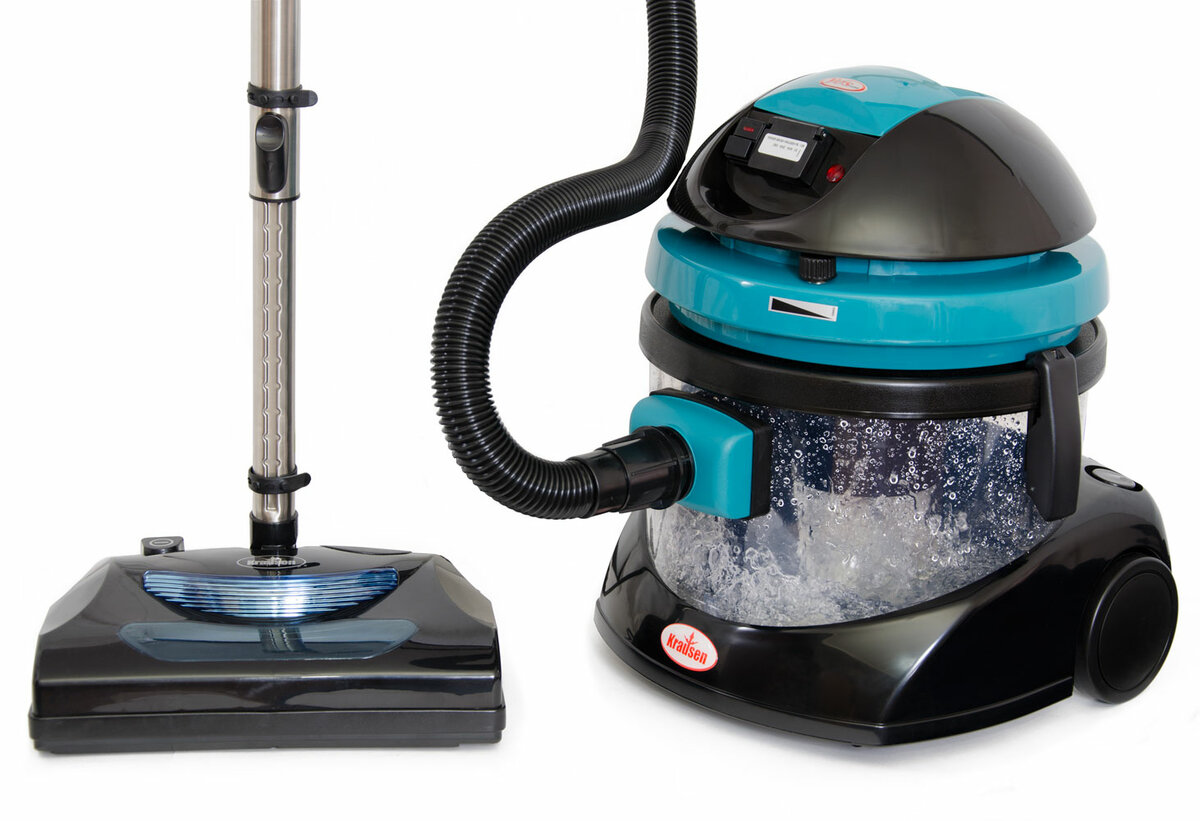
Advantages of models with aquafilter
Dust and debris are separated according to the principle of a centrifuge, when heavier particles are wetted with water and settle to the bottom. Only well-purified air remains at the exit. Devices of this type are only in a stationary version (vertical or floor-standing), since a mini vacuum cleaner has fundamental limitations.

Due to the design features, devices of this type not only remove dust well.Models with a rich set can provide wet cleaning, and even remove spilled liquid from the floor, and the most "advanced" ones are even able to separate garbage: solid is sent to one container, and liquid - to another. The disadvantage of such vacuum cleaners is the complexity of operation and the need for careful care after use.
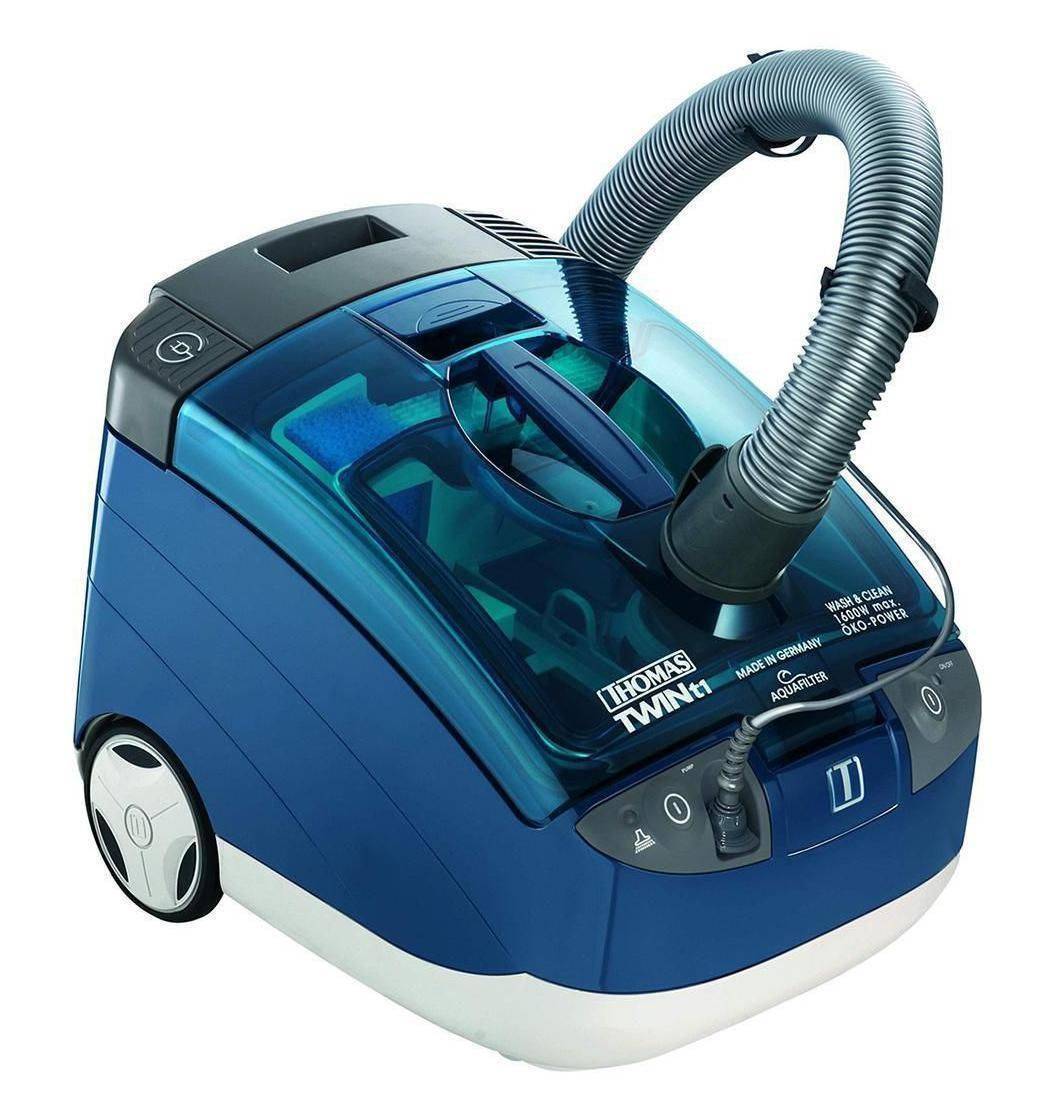
Cleaning area
Another criterion that can affect the choice of a vacuum cleaner is the recommended area, which it is able to process before filling the container or bag. So, a dust collector with a volume of about 0.5 liters allows you to clean a medium-sized room. Liter - up to 80 sq. m. Naturally, a larger container will make it possible to clean a larger space.

Note! The cleaning area is the determining factor when choosing a device with a battery or a robot vacuum cleaner.
Performance characteristics
Among other things, ease of use is of no small importance, for example, the presence of an ergonomic handle or a parking hook. The noise level is also an essential criterion. Perhaps this is the third most important characteristic, after the power and type of filtration.

In addition, you should pay attention to the material from which the vacuum cleaner is made. What the body of the device is made of, the air supply hose, as well as the build quality and cost of consumable components, ultimately determine the result of the choice.
Energy consumption
Modern models are quite economical. However, here you need to understand that a weak mini vacuum cleaner will give completely different results than a powerful stationary one.

Therefore, if regular cleaning requires long passes, and the flooring is carpets and rugs, then it is clear that the vacuum cleaner must be able to do this for a long time and without interruption. At the same time, if we compare the cost of electricity, then the cost of processing such a room in one pass with a powerful device and for two or three times its "brother" is weaker, will be comparable.
Additional features
These include the following factors that do not affect the performance of the vacuum cleaner of its direct functions:
- Additional modes.
- Wealth of equipment.
- Provided nozzle pool.
- The ability to purchase consumable components.
- Ease of use and ergonomics.
- Storage options.
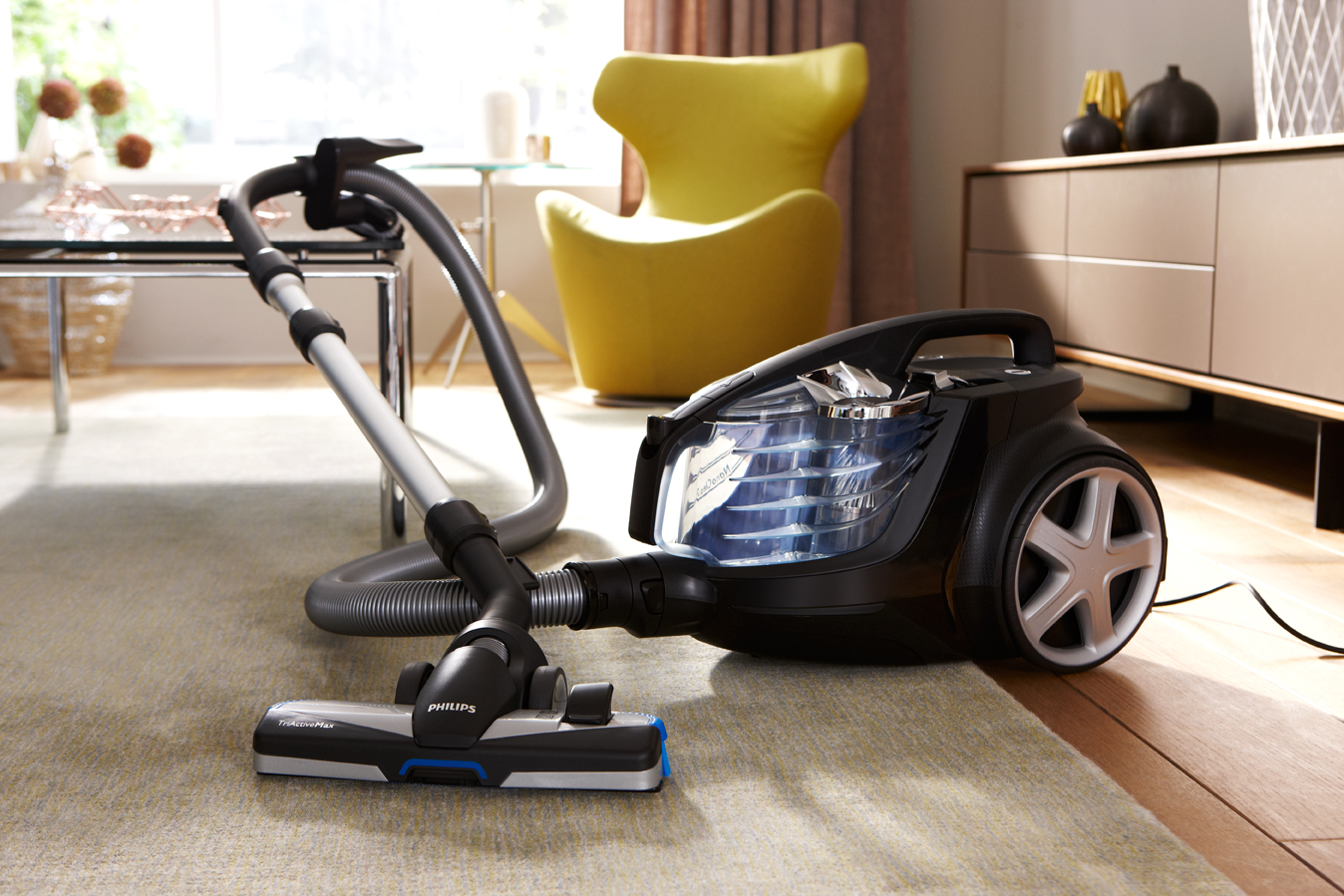
Choosing a vacuum cleaner: the cost factor
As for the price, here it is necessary to adhere to the principle of the golden mean. Devices from the lower price segment will definitely become a source of problems - while reducing the cost, manufacturers have to save on everything, which inevitably affects the quality.
On the other hand, premium devices in most cases will also turn out to be a waste of funds, since rarely anyone uses their redundant functionality in full, plus there is a markup for the brand.

Therefore, the most reasonable decision for most consumers may be to purchase an average budget model, which, in terms of quality, characteristics and its capabilities, represents the very “middle”.
How to choose a good vacuum cleaner for your home: what is important?
Considering the possibility of acquiring, one must proceed from a position of balance, in which a reasonable compromise is reached between what is really important and what “would be good”. Of course, everyone knows better what he wants, so the following parameters are key here:
- Filtration system used (dust collector type).
- Power consumption or suction power.
- Noise level.
- Execution option: floor, vertical ("mop" version) or mini vacuum cleaner.
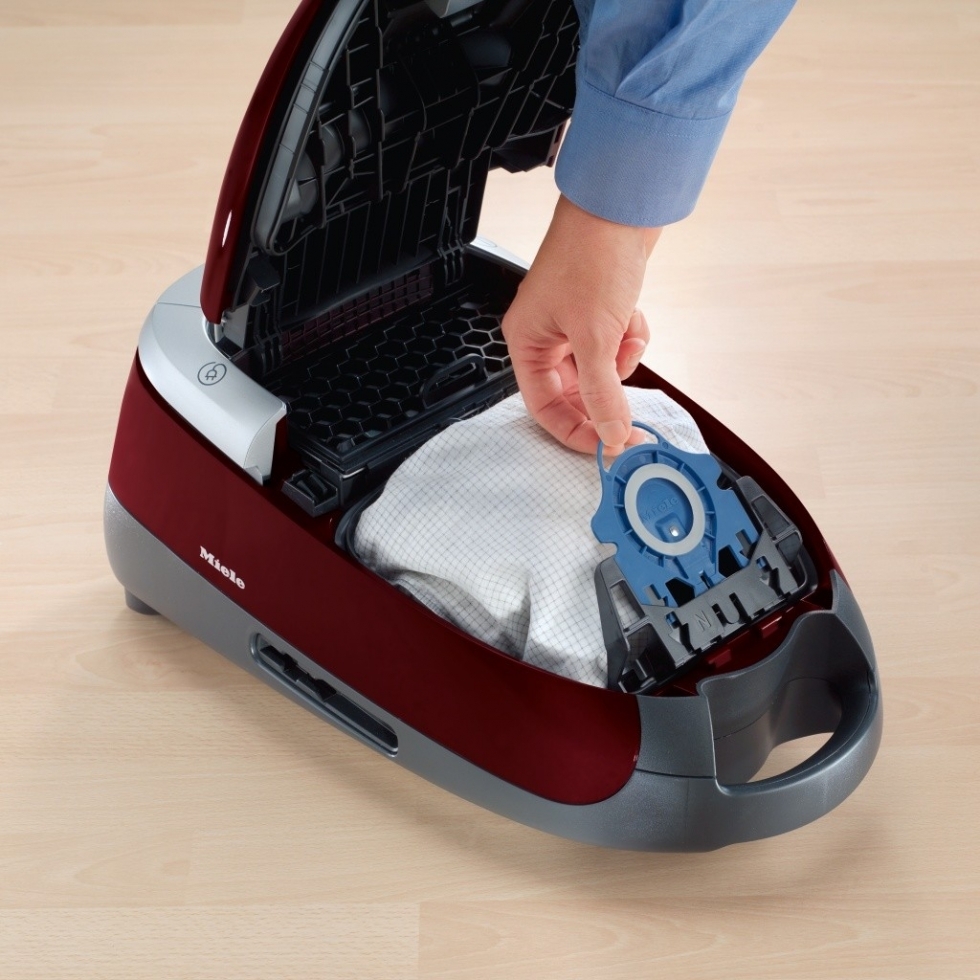
Popular models and manufacturers: who to give preference to?
It should be understood that the given top-lists are almost always a reflection of subjective opinion and should not be used as an argument for the choice - they only set the desired search vector.
LG VK76A09NTCR
Inexpensive model with cyclone filter. Its feature is the ability to compress waste, which makes emptying the container more hygienic. Power consumption - 2 kW. Filter: HEPA 11.

Dauken DW780 Series "Limited Edition"
Such a choice of a vacuum cleaner from a German manufacturer can be justified due to the optimal price-quality ratio. Net power: 450 W, type of dust collector - bag, volume 3L. Filter: HEPA 13.

Tefal TW7681 series "Silence Force Cyclonic"
An excellent cyclonic-type device, distinguished by both workmanship and a wealth of equipment. Power consumption - 750W. Extremely low noise level (about 67 dB). The volume of the container is 2.5 liters. Filter type: HEPA.

Miele SGDA3 "Complete C3"
Bag vacuum cleaner, representative of the middle price segment. Of the features, it is worth noting ease of use, the presence of additional modes, low noise level. Power consumption - 2 kW. The volume of the bag is 4.5 liters. Filter: "AirClean".
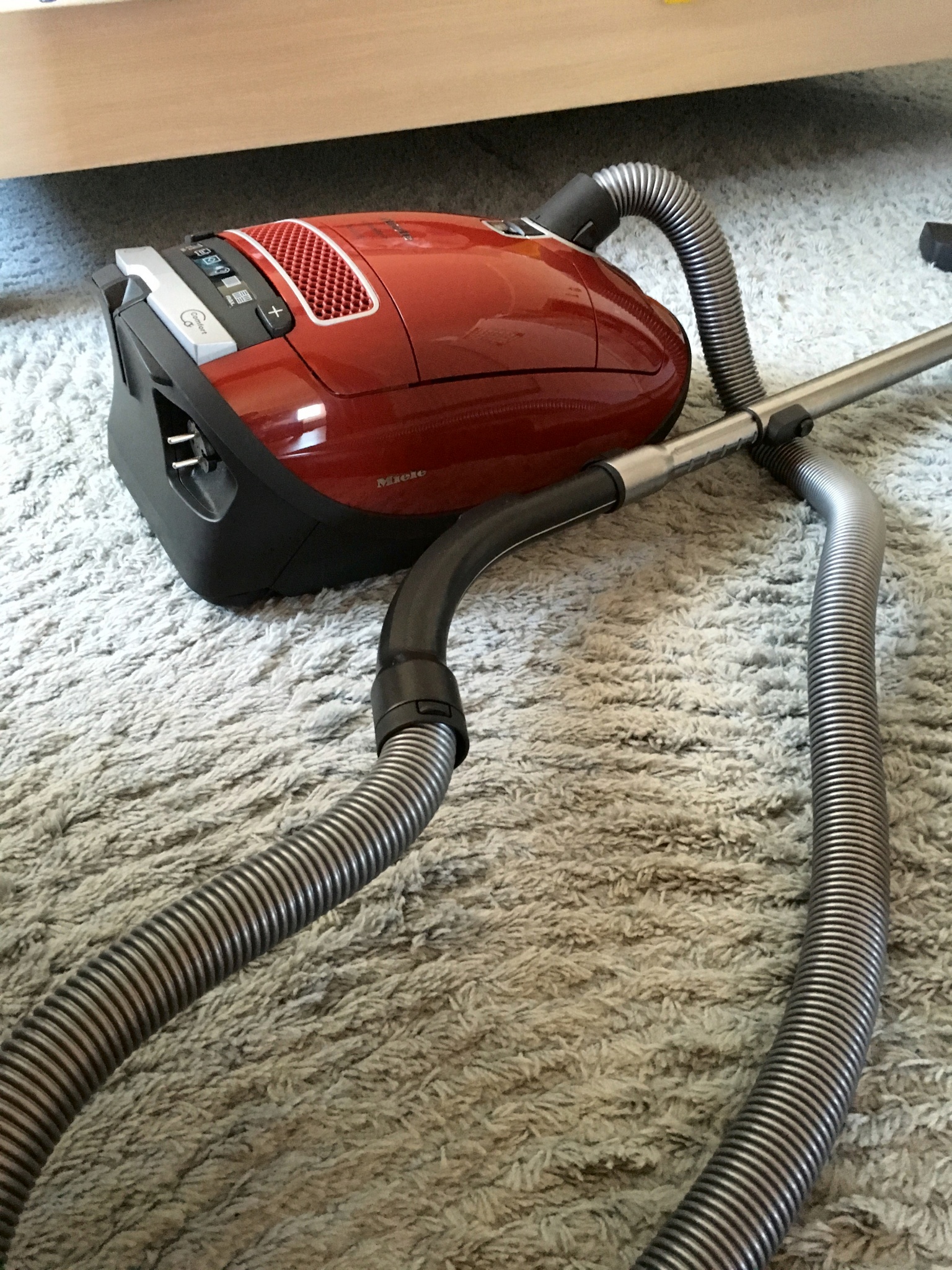
Karcher WD 2
A typical representative of universal household appliances. Despite its "specificity" it is excellent for domestic use. Power consumption - 1000W. A bag with a volume of 12 liters! It allows you to collect various types of garbage: from liquids to small construction waste.

As you can see, choosing a balanced model is not easy at all. In addition to the fact that you need to take into account many different circumstances, there are a number of additional factors that can affect the final choice. Therefore, the basic rules and criteria for choosing a vacuum cleaner for the home are designed to help in making this difficult decision, so that the purchased device does not remain dusty in the closet, but becomes a really useful assistant.
Video: how to choose the right vacuum cleaner









